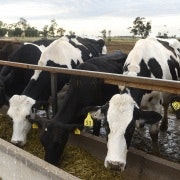The Sigma sick-bay
It appears it was a combination of bad luck, poor management and some ultimately tolerant bankers that were behind Sigma Pharmaceuticals' month-long suspension from trading and the $389 million loss the group has unveiled.
The bad luck – and $424 million of goodwill write-offs – was, as foreshadowed recently (Sigma's poisonous pill, March 18), largely related to the 2005 merger with Arrow Pharmaceuticals and the sharemarket response to the announcement of the deal. Between the announcement and the completion of the share-swap deal the spike in Sigma's share price added $309 million to the level of goodwill.
But it wasn't just bad luck that led to the goodwill write-offs and a further $52 million of non-recurring losses and left Sigma in the hands of its bankers but the way in which the goodwill interacted with poor management execution and other misjudgments.
The value of the goodwill was supported by Sigma's expectations of its future cash flows from the businesses, including the synergies it expected to achieve. Today its directors said those synergies had not been achieved.
The situation was compounded, and Sigma's hand forced, by intense discounting within the generics market that caused Sigma to revise its cash flow forecasts. The weak performance of Sigma's Herron brand in the grocery channel added another $49.1 million of write-downs.
And, the value of the goodwill was also impacted by a recalculation, against the backdrop of its lower profitability and weakened balance sheet, of Sigma's cost of capital. Naturally, it is now higher.
Fortunately for Sigma its banks waived the breaches of covenants and renegotiated their facilities with re-set covenants, presumably agreeing with Sigma that its underlying results – a profit of $67.7 million was sound. Sigma doesn't face principal repayments until early next year.
However, an unusual aspect of the overall result was that while underlying earnings were down 15.5 per cent, sales were up 4.5 per cent. That can be attributable to the increased competition and discounting towards the end of the year to January that triggered the review of intangibles but Sigma also referred to some self-inflicted damage.
It said that towards the end of the financial year there was significant growth in customer volumes directly related to its large group customers. While that drives sales growth, Sigma gives – or at least used to – its big customers extended payment terms. That, it now says, strained its working capital position and presumably winnowed its margins. Sigma is now renegotiating those terms.
The other controllable aspect of Sigma's performance was inventory. It says that since the Arrow acquisition its second half results have been under-pinned by year-end promotions, particularly for its generics, which can involve more than six months of stocks building.
The discounting, and lower than expected participation by customers in the promotions, impacted profitability and left the group with excess inventories and a $24 million write-down in their value.
While the bulk of the losses were non-cash, and Sigma is forecasting a return to 2008-09 levels of profitability of around $80 million after tax, they will leave a painful legacy for shareholders.
There is no final dividend and Sigma has warned that any interim dividend would be dependent on the attitude of its bankers, which suggest there is a definite limit to the banks' tolerance. In fact with accumulated losses of more than $300 million, it could be a while before the group pays a dividend.
It is also apparent that while the banks have waived the breaches of their covenants, they are now monitoring Sigma closely. The company has $100 million debt repayments due in each of February and March and a further $300 million of debt and off balance sheet funding that matures in September next year.
Sigma's share price was smashed on resumption of trading – it was almost halved. It would be a brave, or foolish, board that looked to the shareholders who provided almost $300 million of new equity last year on the basis of a forecast of modest growth in profits for the year to January for more help in refinancing those maturing debts.
Mind you, if Sigma were forced to raise more equity, it is probable that the board and senior management would, in those circumstances, look somewhat different. In fact there will be some in the market who will be surprised that the faces haven't started to change already.
















